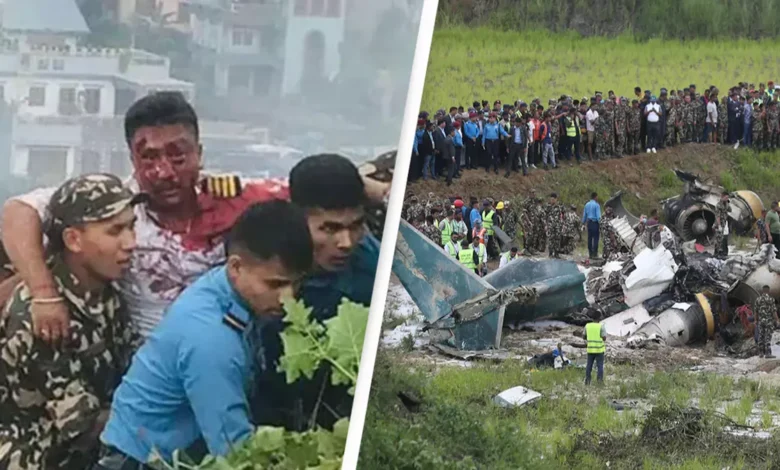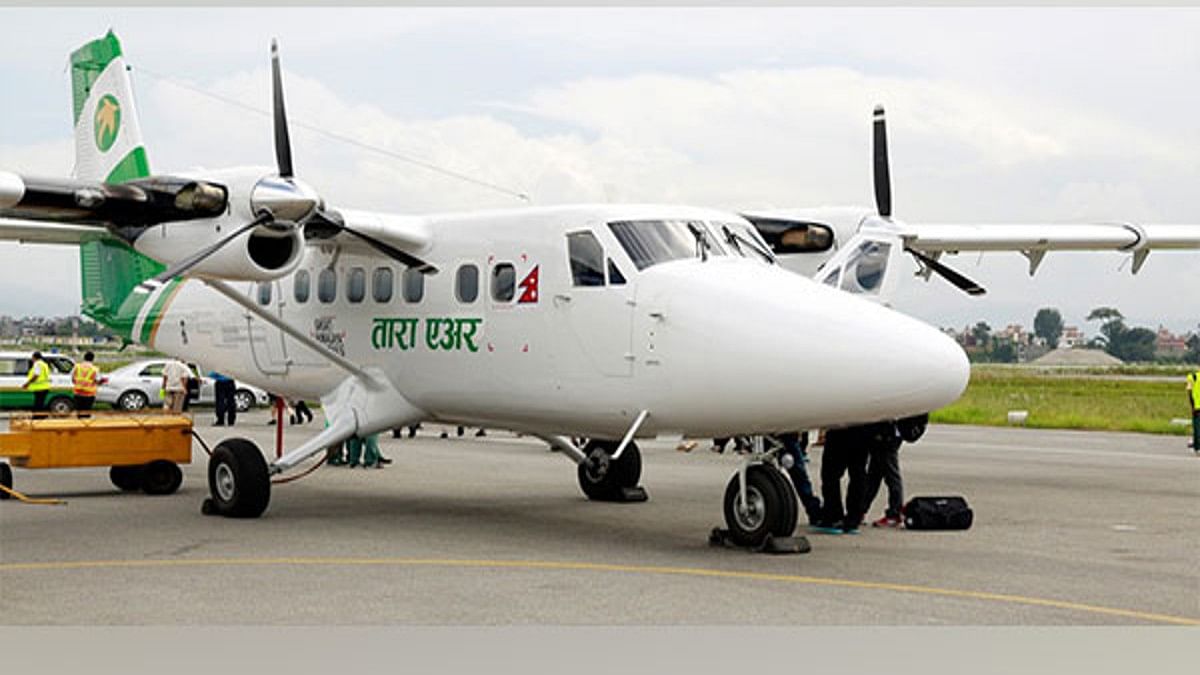The Plane Crash In Nepal Killed 18 People On Board And Left Only 1 Survivor: The Problems Dragging Nepal’s Aviation Sector

The Plane Crash In Nepal Killed 18 People On Board And Left Only 1 Survivor: The Problems Dragging Nepal’s Aviation Sector
The Nepal plane crashed at the end of a runway a few minutes after taking off and it had missed collied with the Qatar Airways laying on the runway. The crash had killed all the people on board except the pilot and only the pilot who survived a deadly plane crash in Nepal was saved after his cockpit split from the plane on impact with a freight container, seconds before the rest of the aircraft crashed in flames.

Captain Manish Ratna Shakya, the sole survivor of the disaster that killed 18 people at Kathmandu airport, is being treated in hospital.
Rescuers said they had reached the stricken pilot as flames neared the cockpit section of the aircraft embedded in the container.
“He was facing difficulty to breathe as the air shield was open. We broke the window and immediately pulled him out,” Senior Superintendent of Nepal Police Dambar Bishwakarma said.
“He had blood all over his face when he was rescued but we took him to the hospital in a condition where he could speak,” he added.
Nepal’s civil aviation minister Badri Pandey described how the aircraft had suddenly turned right as it took off from the airport, before crashing into the east side of the runway.
CCTV footage shows the aircraft in flames careering across part of the airport before part of it appears to fall into a valley at the far edge of the site.
“It hit the container on the edge of the airport… then, it fell further below,” Mr Pandey said. “The cockpit, however, remained stuck inside the container. This is how the captain survived.”
The freight container was used by a local helicopter company to store its maintenance tools, local media reported
“The other part of the plane crashed into a nearby mound and it tore into pieces. The entire area away from the region where the cockpit fell down caught fire and everything was burnt,” Mr Pandey said.
The pilot was “rescued within five minutes of the crash” and “was very scared but had not lost consciousness at that time”, according to a statement released by the Nepali army.
The problems dragging Nepal’s aviation sector
Nepal’s aviation sector is facing challenges to improve safety, requiring investments in infrastructure, aircraft maintenance and legal oversight to prevent future tragedies According to the Geneva-based Bureau of Air Accident Archives (B3A), there have been 68 air accidents in Nepal since 1946, killing a total of 900 people. The Aviation Safety Network puts the number of fatal accidents (since 1919) at 41, with 878 total fatalities.
These numbers are very high when taking into account the relatively low number of flights Nepal has seen takeoff or land on its soil. The rugged mountainous terrain, dearth of investment in new planes and infrastructure, and poor regulation have contributed to these crashes. In Nepal, airstrips are often precariously placed on plateaus or cut mountains. They require a high degree of skill to land and are conducive to frequent accidents simply based on pilot errors. Smaller runways are also capable of handling lighter, often single-engine, aircraft. These, however, are more susceptible to inclement weather which is common across Nepal.

The Kathmandu airport too is challenging for pilots. Although it boasts a relatively longer 3,350 m runway (compared to other Nepalese airports) allowing heavier aircraft to operate, this is still shorter than most major international airports. Given the altitude (1,338 m) at which the airport is located, this is more of a challenge in higher altitudes, aircraft need more speed to take off due to the thinner air. Moreover, constructed in the narrow, oval-shaped Kathmandu valley, the airport is sandwiched between jagged high mountains on all sides. This means pilots have less room in which to manoeuvre their aircraft. The mountains also impact local weather conditions and can lead to sudden turbulence and weather changes. According to reports, many of the aircraft operating in Nepal are ageing and lack world-class maintenance. Many lack equipment and facilities which are nowadays considered standard in other countries. This is why all Nepal-based aircraft were banned from entering European airspace by the European Union in 2013. The Kathmandu Post reported in 2022 that behind the ban (which is still active) was the Nepal government’s failure to act on improving aviation safety regulation and its implementation.
Why is Nepal prone to air accidents?
A challenging landscape

Topography has gifted Nepal with picturesque landscapes but posits unrivalled challenges to flight operations and Nepal has 8 of the 14 highest peaks in the world like Mount Everest or Sagarmatha. For the airline industry, this is often an unprecedented, severe situation with sudden weather changes that can create dangerous situations. Airports built in mountainous regions often need to have shorter runways that can only accommodate turboprop-powered regional aircraft, rather than large jet airliners that can access larger cities in Nepal. As a result, aviation carriers in Nepal have a variety of aircraft on their fleets. These craft vary in condition, presenting potential safety hazards.
The ATR 72 aircraft is one typical aircraft used by Nepali carriers. It is a turboprop-powered regional aircraft with a capacity of between 44 and 78 passengers. The planes are a joint venture between Airbus of France and Leonardo of Italy. The aircraft involved in this accident had been in service for 15 years, which was the age of an aircraft.

A growing and fast-changing industry
Nepal has welcomed private investment into its aviation sector since 1992 and the 29 international airlines operate in Nepal’s capital too. With air travel in Nepal becoming more accessible and affordable, airport infrastructure development has remained far behind compared to the growth of air traffic. This has led to increased congestion at airports, increased fare competition among airlines and reduced safety ratings in fact, there have been at least 350 plane- or helicopter-related deaths in the country since 2000, raising questions about the effectiveness of its aviation safety regulations.
Working hard to improve
Nepal became a member of the UN’s International Civil Aviation Organisation (ICAO) in 1960 This membership obliges the country to abide by international conventions, ICAO’s regulations, standards, and recommended practices in the aviation safety and while Nepal’s aviation industry has made significant efforts to improve safety, unfortunately, the safety record still doesn’t match up with the requirements of other civil aviation authorities. In particular, the European Union banned all Nepali airlines from operating in the group’s airspace in 2013 after ICAO raised its red flag. That ban has not yet been lifted, and Nepal is on the EU’s air safety list.




